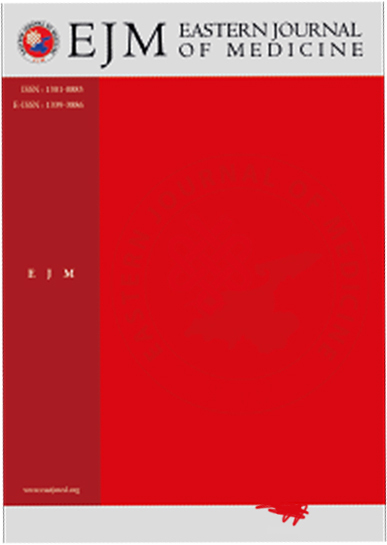Evaluation of skin prick test results in patients with atopic dermatitis
Ömer Kutlu1, Ahmet Metin21Department of Dermatology and Venereology, Uşak University School of Medicine,Uşak2Department Of Dermatology and Venereology, Ankara Yıldırım Beyazıt University School of Medicine, Ankara
INTRODUCTION: Skin prick test may be useful to detect possible intrinsic and extrinsic triggering factors for atopic dermatitis. In this study, patients with atopic dermatitis who were performed SPT are examined. The most common triggering allergens were evaluated. The association between demographic factors, accompanying other allergic disorders and SPT positivity was also investigated.
METHODS: This study was carried out retrospectively by examining the file records of 144 patients who were performed SPT due to atopic dermatitis.
RESULTS: The most frequent allergens with at least three positivity were grasses (31.2%), grasses mix (24,3%), Cynodon dactylon (15.3%), D.pteronyssinus (9.7%), D.farinae (7.6%), respectively. D. farinae and D. pteronyssinus positivity were significantly statistically more frequent in patients with above 18 years old than patients under 18 years old (p values were 0.003 and 0.007, respectively). There was statistical significant differences between at least one allergen positivity and allergic rhinitis (p=0.043) while there was no difference between at least one allergen positivity and other allergic conditions including asthma, conjuctivitis, and food hypersensitivty (0.721, 0.927, 0.258). The most common at lest tree positive allergens in patients with atopic dernatitis who accompaying with allergic rhinit were grasses (44.5%), grasses mix (37%), Cynodon dactylon (27.2%), D.farinae (9.9%), D.pteronyssinus (8.6%).
DISCUSSION AND CONCLUSION: In this study, house dust mites and grass allergens were the most common triggers of atopic dermatitis. The frequency of food allergens appears less common in atopic dermatitis. The most common allergic comorbidity associated with atopic dermatitis was allergic rhinitis, and house dust mites/grasses were the most common allergens in these cases.
Keywords: allergy, atopic dermatitis, skin prick test
Manuscript Language: English














